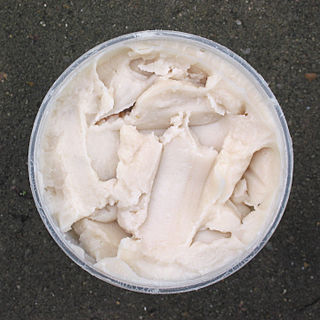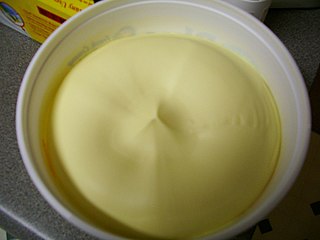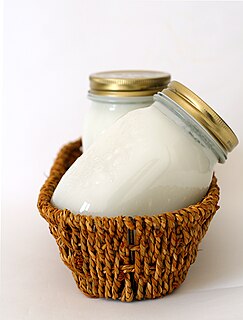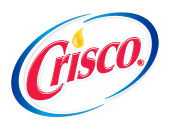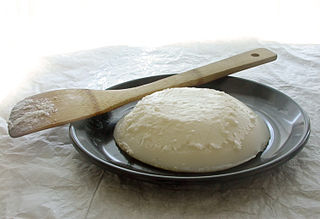| Plant oils |
|---|
 |
| Types |
| Uses |
| Components |
Vegetable oil is a liquid derived from plants. These are triglyceride-based, and includes cooking oils like sunflower oil, solid oils like cocoa butter, oils used in paint like linseed oil and oils for industrial purposes, including as biofuels.

Vegetable oils, or vegetable fats, are fats extracted from seeds, or less often, from other parts of fruits. Like animal fats, vegetable fats are mixtures of triglycerides. Soybean oil, rapeseed oil, and cocoa butter are examples of fats from seeds. Olive oil, palm oil, and rice bran oil are example of fats from other parts of fruits. In common usage, vegetable oil may refer exclusively to vegetable fats which are liquid at room temperature.

A triglyceride is an ester derived from glycerol and three fatty acids. Triglycerides are the main constituents of body fat in humans and other animals, as well as vegetable fat. They are also present in the blood to enable the bidirectional transference of adipose fat and blood glucose from the liver, and are a major component of human skin oils.

Cooking oil is plant, animal, or synthetic fat used in frying, baking, and other types of cooking. It is also used in food preparation and flavouring not involving heat, such as salad dressings and bread dips, and in this sense might be more accurately termed edible oil.
Vegetable oil may also refer to:
- Essential oils are based on volatile aromatic compounds, and include oils used in flavors, fragrances, and for health purposes, such as lemon oil, or oil of peppermint.
- Macerated oils are oils to which other matter has been added, such as herbs. Typically, the oil used is a food-grade fat-type oil
- Hydrogenated fats and oils are triglyceride-based fats and oils which have been sparged at high temperature and high pressure with hydrogen. The hydrogen bonds with the triglyceride, increasing the molecular weight. Oils are hydrogenated to increase resistance to rancidity (oxidation) or to raise the viscosity and melting point of the fat or oil.
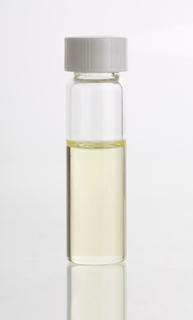
An essential oil is a concentrated hydrophobic liquid containing volatile chemical compounds from plants. Essential oils are also known as volatile oils, ethereal oils, aetherolea, or simply as the oil of the plant from which they were extracted, such as oil of clove. An essential oil is "essential" in the sense that it contains the "essence of" the plant's fragrance—the characteristic fragrance of the plant from which it is derived. The term essential used here does not mean indispensable as with the terms essential amino acid or essential fatty acid which are so called since they are nutritionally required by a given living organism. In contrast to fatty oils, essential oils typically evaporate completely without leaving a stain or residue.

Hydrogenation – meaning, to treat with hydrogen – is a chemical reaction between molecular hydrogen (H2) and another compound or element, usually in the presence of a catalyst such as nickel, palladium or platinum. The process is commonly employed to reduce or saturate organic compounds. Hydrogenation typically constitutes the addition of pairs of hydrogen atoms to a molecule, often an alkene. Catalysts are required for the reaction to be usable; non-catalytic hydrogenation takes place only at very high temperatures. Hydrogenation reduces double and triple bonds in hydrocarbons.
In chemistry, sparging, also known as gas flushing in metallurgy, is a technique which involves bubbling a gas through a liquid to remove dissolved gases or volatile components from the liquid. By Henry's law, the amount of dissolved gases in a liquid depend on the partial pressure of the gases exposed to the liquid. Sparging increases the gas-liquid interface and reduces the partial pressure of the dissolved gas outside the liquid by carrying it away. Many sparging processes such as solvent removal may be carried out using air, but to remove oxygen, or for sensitive solutions or molten metals, a chemically inert gas such as nitrogen, argon, or helium is used.


